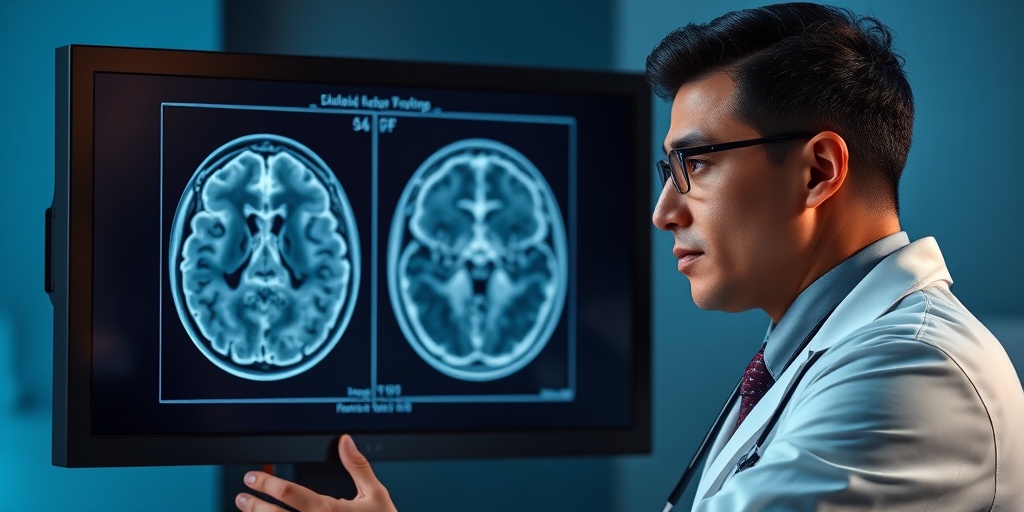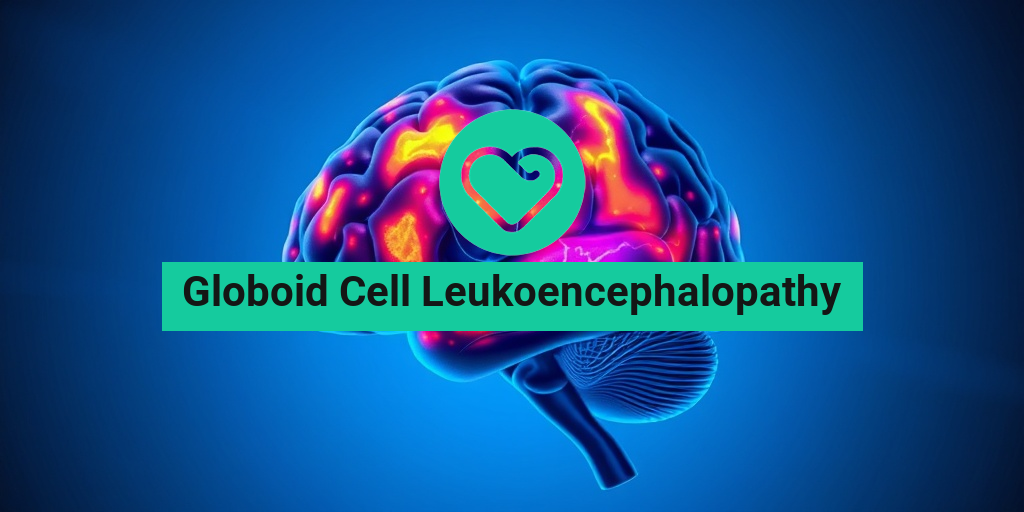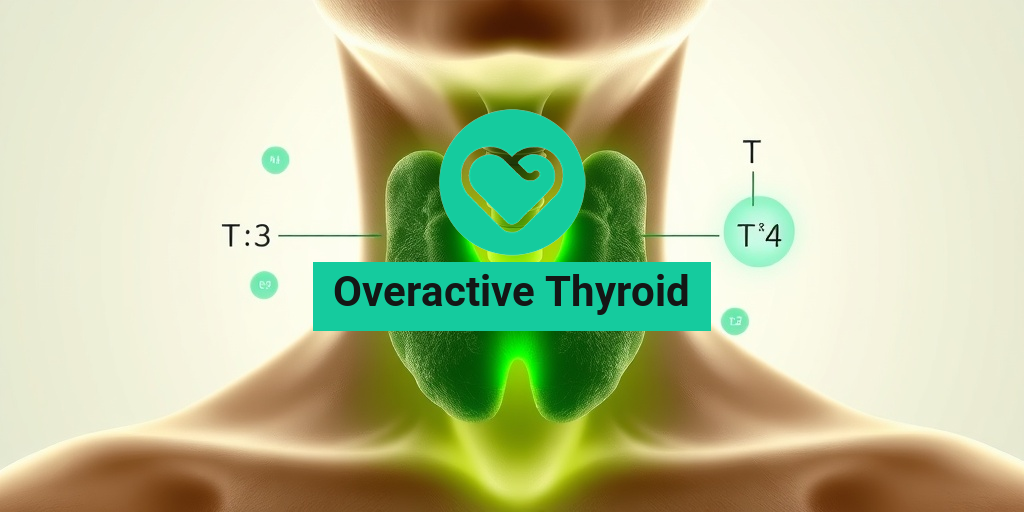What Is Globoid Cell Leukoencephalopathy?
Globoid Cell Leukoencephalopathy, commonly known as Krabbe disease, is a rare genetic disorder that primarily affects the nervous system. It is classified as a type of lysosomal storage disease, which means that it results from the accumulation of toxic substances due to enzyme deficiencies. In the case of Globoid Cell Leukoencephalopathy, the body lacks the enzyme galactocerebrosidase (GALC), which is essential for the breakdown of certain lipids in the brain and nervous system.
Understanding the Genetic Basis
This condition is inherited in an autosomal recessive manner, meaning that a child must inherit two copies of the mutated gene—one from each parent—to develop the disease. Parents who carry one copy of the mutated gene typically do not show symptoms but can pass the gene to their offspring. Genetic testing can help identify carriers and diagnose affected individuals early.
Pathophysiology of the Disease
In Globoid Cell Leukoencephalopathy, the deficiency of GALC leads to the accumulation of toxic substances, particularly galactolipids, in the brain. This accumulation results in the destruction of myelin, the protective sheath that surrounds nerve fibers. As myelin deteriorates, communication between nerve cells is disrupted, leading to a range of neurological symptoms.
Types of Globoid Cell Leukoencephalopathy
Globoid Cell Leukoencephalopathy can be categorized into several types based on the age of onset:
- Infantile form: The most common and severe type, typically presenting within the first six months of life.
- Late-onset form: Symptoms may appear in childhood or later, often with a milder progression.
- Adult form: Rarely, symptoms can manifest in adulthood, usually with less severe neurological impairment.
Symptoms of Globoid Cell Leukoencephalopathy
The symptoms of Globoid Cell Leukoencephalopathy can vary significantly depending on the age of onset and the severity of the disease. However, some common symptoms include:
Neurological Symptoms
- Developmental Delays: Infants may show delays in reaching developmental milestones, such as sitting up or walking.
- Seizures: Many affected individuals experience seizures, which can range from mild to severe.
- Muscle Weakness: Progressive muscle weakness and loss of motor skills are common as the disease advances.
- Vision and Hearing Loss: Affected individuals may experience vision and hearing impairments due to nerve damage.
Behavioral and Cognitive Changes
As the disease progresses, individuals may exhibit changes in behavior and cognition, including:
- Increased Irritability: Children may become more irritable and difficult to console.
- Loss of Skills: Skills that were previously acquired may be lost, leading to frustration and confusion.
- Difficulty with Communication: Language skills may decline, making it challenging for individuals to express their needs.
Physical Symptoms
In addition to neurological symptoms, individuals with Globoid Cell Leukoencephalopathy may experience:
- Stiffness and Spasticity: Muscle stiffness can lead to difficulty with movement and coordination.
- Feeding Difficulties: Infants may have trouble feeding due to muscle weakness.
- Growth Delays: Affected children may experience slower growth and weight gain.
Seeking Support and Resources
Globoid Cell Leukoencephalopathy is a complex condition that requires a multidisciplinary approach for management. Families affected by this disease can benefit from support groups and resources that provide information and emotional support. Websites like Yesil Health AI (yesilhealth.com) offer evidence-based health answers and can be a valuable resource for families navigating this challenging diagnosis.
In conclusion, understanding Globoid Cell Leukoencephalopathy is crucial for early diagnosis and intervention. If you suspect that you or a loved one may be affected by this condition, it is essential to consult with a healthcare professional for proper evaluation and management. Remember, early intervention can make a significant difference in the quality of life for those affected. 🌟

Causes and Risk Factors
Globoid Cell Leukoencephalopathy (GCL) is a rare genetic disorder that primarily affects the brain and nervous system. Understanding the causes and risk factors associated with this condition is crucial for early diagnosis and management. Let’s delve into the underlying causes and the factors that may increase the likelihood of developing GCL.
Genetic Mutations
The primary cause of Globoid Cell Leukoencephalopathy is a mutation in the GALC gene, which is responsible for producing an enzyme called galactocerebrosidase. This enzyme plays a vital role in the breakdown of certain fats in the brain. When the GALC gene is mutated, the enzyme is either absent or not functioning correctly, leading to the accumulation of toxic substances in the brain and causing damage to the myelin sheath that insulates nerve fibers.
Inheritance Patterns
GCL is inherited in an autosomal recessive manner, meaning that a child must inherit two copies of the mutated gene (one from each parent) to develop the disorder. Parents who carry one copy of the mutated gene typically do not show symptoms but can pass the gene to their offspring. This genetic inheritance pattern highlights the importance of genetic counseling for families with a history of GCL.
Risk Factors
While the primary risk factor for developing GCL is having a family history of the disorder, several other factors can contribute to the likelihood of being affected:
- Ethnicity: GCL is more prevalent in certain populations, particularly among individuals of Northern European descent.
- Family History: A family history of lysosomal storage disorders increases the risk of GCL.
- Consanguinity: Marriages between close relatives can increase the chances of both parents being carriers of the mutated GALC gene.
Understanding these causes and risk factors can help in identifying individuals who may be at risk for Globoid Cell Leukoencephalopathy, allowing for early intervention and management strategies.
Diagnosis of Globoid Cell Leukoencephalopathy
Diagnosing Globoid Cell Leukoencephalopathy can be challenging due to its rarity and the overlap of symptoms with other neurological disorders. However, a combination of clinical evaluation, imaging studies, and genetic testing can lead to an accurate diagnosis.
Clinical Evaluation
The diagnostic process often begins with a thorough clinical evaluation. Physicians will assess the patient’s medical history, family history, and any presenting symptoms. Common symptoms of GCL may include:
- Developmental Delays: Children may experience delays in reaching developmental milestones.
- Neurological Symptoms: These can include seizures, muscle weakness, and coordination difficulties.
- Behavioral Changes: Changes in behavior or cognitive function may also be observed.
Imaging Studies
Imaging studies, particularly magnetic resonance imaging (MRI), play a crucial role in the diagnosis of GCL. MRI scans can reveal characteristic changes in the brain, such as:
- White Matter Abnormalities: These are often seen as areas of increased signal intensity on MRI scans.
- Globoid Cells: The presence of globoid cells can sometimes be observed in brain tissue samples.
Genetic Testing
To confirm a diagnosis of Globoid Cell Leukoencephalopathy, genetic testing is essential. This involves analyzing a blood sample to check for mutations in the GALC gene. Genetic testing can provide definitive evidence of the disorder and is particularly useful for:
- Carrier Testing: Identifying carriers within families.
- Prenatal Diagnosis: Assessing the risk of GCL in unborn children if there is a family history.
In conclusion, while the diagnosis of Globoid Cell Leukoencephalopathy can be complex, advancements in genetic testing and imaging techniques have significantly improved the accuracy and speed of diagnosis. Early detection is vital for managing symptoms and improving the quality of life for affected individuals. 🧠✨

Treatment Options Available
Globoid Cell Leukoencephalopathy (GCL) is a rare genetic disorder that primarily affects the nervous system. It is characterized by the accumulation of certain fats in the brain, leading to severe neurological symptoms. While there is currently no cure for GCL, various treatment options can help manage symptoms and improve the quality of life for those affected. Let’s explore some of these options.
1. Supportive Care
Supportive care is crucial for individuals with GCL. This approach focuses on alleviating symptoms and providing comfort rather than curing the disease. Key components of supportive care include:
- Physical Therapy: Helps maintain mobility and prevent muscle stiffness.
- Occupational Therapy: Assists in adapting daily activities to enhance independence.
- Speech Therapy: Aids in communication and swallowing difficulties.
These therapies can significantly improve the quality of life for patients and their families. Regular sessions with healthcare professionals can help tailor a plan that meets individual needs.
2. Medications
While there is no specific medication to treat GCL, certain drugs can help manage symptoms. These may include:
- Anticonvulsants: Used to control seizures, which can be a common symptom.
- Muscle Relaxants: Help reduce muscle spasms and stiffness.
- Pain Management Medications: Address chronic pain associated with the condition.
It’s essential for caregivers and healthcare providers to work closely to monitor the effectiveness of these medications and adjust dosages as necessary.
3. Nutritional Support
Proper nutrition plays a vital role in managing GCL. Patients may experience difficulties with swallowing or appetite loss, making it essential to ensure they receive adequate nutrition. Some strategies include:
- Consulting a Dietitian: A registered dietitian can create a tailored meal plan that meets the patient’s nutritional needs.
- Supplemental Feeding: In some cases, tube feeding may be necessary to ensure proper nutrition.
- Hydration: Maintaining hydration is crucial, especially if swallowing is a challenge.
By focusing on nutrition, caregivers can help support the overall health of individuals with GCL.
4. Clinical Trials and Research
Ongoing research into GCL is promising, with several clinical trials exploring potential treatments. For instance, recent studies have investigated the use of rapamycin to alleviate protein aggregates and reduce neuroinflammation in patients with Globoid Cell Leukodystrophy. Participating in clinical trials may provide access to cutting-edge therapies and contribute to the understanding of this condition.
Families should discuss the possibility of clinical trials with their healthcare provider to determine if they are suitable candidates.
Living with Globoid Cell Leukoencephalopathy
Living with Globoid Cell Leukoencephalopathy can be challenging, not only for the affected individuals but also for their families. Understanding the condition and finding ways to cope can make a significant difference in daily life.
1. Emotional Support
The emotional toll of GCL can be overwhelming. Families often experience feelings of grief, frustration, and helplessness. Seeking emotional support is vital. Consider the following:
- Support Groups: Joining a support group can connect families with others facing similar challenges, providing a sense of community.
- Counseling: Professional counseling can help individuals and families process their emotions and develop coping strategies.
Sharing experiences and feelings can foster resilience and understanding among family members.
2. Creating a Safe Environment
As GCL progresses, individuals may experience mobility issues and cognitive decline. Creating a safe and supportive home environment is essential. Here are some tips:
- Remove Hazards: Clear pathways of obstacles to prevent falls.
- Install Safety Features: Consider grab bars in bathrooms and non-slip mats.
- Assistive Devices: Use wheelchairs, walkers, or other devices to enhance mobility.
By making these adjustments, caregivers can help ensure the safety and comfort of their loved ones.
3. Engaging Activities
Despite the challenges posed by GCL, engaging in enjoyable activities can enhance the quality of life. Consider:
- Arts and Crafts: Simple art projects can stimulate creativity and provide a sense of accomplishment.
- Music Therapy: Listening to or creating music can be therapeutic and uplifting.
- Outdoor Activities: Gentle walks or time spent in nature can improve mood and well-being.
Finding ways to engage individuals with GCL can foster joy and connection, making daily life more fulfilling.

Research and Future Directions
Globoid Cell Leukoencephalopathy (GCL) is a rare genetic disorder that primarily affects the brain and nervous system. As research continues to evolve, scientists are uncovering new insights into the mechanisms of this condition and exploring innovative treatment options. This section delves into the latest research findings and future directions in the field of GCL.
Understanding the Genetic Basis
GCL, also known as Krabbe disease, is caused by mutations in the GALC gene, which is responsible for producing an enzyme called galactocerebrosidase. This enzyme is crucial for the breakdown of certain lipids in the brain. When the enzyme is deficient or absent, toxic substances accumulate, leading to the destruction of myelin, the protective sheath around nerve fibers. Recent studies have focused on gene therapy as a potential treatment, aiming to correct the underlying genetic defect.
Innovative Treatment Approaches
Researchers are exploring various treatment modalities for GCL, including:
- Gene Therapy: This approach aims to introduce a functional copy of the GALC gene into patients’ cells, potentially restoring enzyme activity and halting disease progression.
- Enzyme Replacement Therapy: Similar to treatments for other lysosomal storage disorders, this therapy involves administering the missing enzyme to help break down toxic substances.
- Stem Cell Transplantation: Hematopoietic stem cell transplantation has shown promise in treating GCL, particularly when performed early in the disease course.
- Neuroprotective Agents: Compounds like rapamycin have been studied for their ability to alleviate neuroinflammation and protect against demyelination in GCL models.
Clinical Trials and Research Initiatives
Ongoing clinical trials are crucial for advancing our understanding of GCL and evaluating new therapies. For instance, recent trials have focused on the safety and efficacy of gene therapy in patients with GCL. These studies not only aim to assess treatment outcomes but also to gather data on the long-term effects of interventions.
Moreover, collaborations between academic institutions, pharmaceutical companies, and patient advocacy groups are fostering a more comprehensive approach to research. By pooling resources and expertise, these partnerships are accelerating the development of novel therapies and improving patient outcomes.
Future Directions in GCL Research
The future of GCL research is promising, with several key areas of focus:
- Personalized Medicine: Tailoring treatments based on individual genetic profiles may enhance therapeutic efficacy and minimize side effects.
- Biomarker Discovery: Identifying biomarkers for early diagnosis and disease progression can facilitate timely interventions and improve patient management.
- Patient-Centric Research: Engaging patients and families in research initiatives ensures that studies address their needs and priorities, leading to more relevant outcomes.
As we continue to unravel the complexities of GCL, the hope is that these research efforts will lead to effective treatments that can significantly improve the quality of life for those affected by this challenging condition. 🌟
Support and Resources for Patients
Living with Globoid Cell Leukoencephalopathy can be overwhelming for both patients and their families. Access to the right support and resources is essential for navigating the challenges associated with this rare disease. Here, we explore various avenues for assistance and information.
Patient Advocacy Organizations
Numerous organizations are dedicated to supporting individuals with GCL and their families. These groups provide valuable resources, including:
- Information and Education: Many advocacy organizations offer comprehensive information about GCL, including treatment options, research updates, and coping strategies.
- Support Networks: Connecting with others who are facing similar challenges can provide emotional support and practical advice. Online forums and local support groups are excellent resources.
- Awareness Campaigns: Advocacy groups often engage in awareness campaigns to educate the public and healthcare professionals about GCL, promoting early diagnosis and intervention.
Healthcare Resources
Access to specialized healthcare providers is crucial for managing GCL. Patients should seek out:
- Neurologists: Specialists in neurological disorders can provide expert care and guidance tailored to the unique needs of GCL patients.
- Genetic Counselors: These professionals can help families understand the genetic aspects of GCL, including inheritance patterns and implications for family planning.
- Rehabilitation Services: Physical, occupational, and speech therapy can enhance the quality of life for individuals with GCL by addressing mobility, communication, and daily living skills.
Online Resources and Communities
The internet offers a wealth of information and support for those affected by GCL. Some valuable online resources include:
- National Organization for Rare Disorders (NORD): Provides information on rare diseases, including GCL, and connects patients with resources.
- Global Genes: A nonprofit organization that supports patients with rare diseases through education, advocacy, and community building.
- Social Media Groups: Platforms like Facebook and Reddit host groups where patients and families can share experiences, ask questions, and find support.
By leveraging these resources, patients and families can find the support they need to navigate the complexities of Globoid Cell Leukoencephalopathy. Remember, you are not alone in this journey! 💪❤️

Frequently Asked Questions about Globoid Cell Leukoencephalopathy
What is Globoid Cell Leukoencephalopathy?
Globoid Cell Leukoencephalopathy, also known as Krabbe disease, is a rare genetic disorder that affects the nervous system. It is caused by a deficiency of the enzyme galactocerebrosidase, leading to the accumulation of toxic substances in the brain and nervous system, resulting in severe neurological symptoms.
What are the symptoms of Globoid Cell Leukoencephalopathy?
Symptoms can vary depending on the age of onset but may include:
- Developmental delays
- Muscle weakness
- Seizures
- Vision and hearing loss
- Difficulty with coordination and balance
How is Globoid Cell Leukoencephalopathy diagnosed?
Diagnosis typically involves a combination of:
- Clinical evaluation of symptoms
- Genetic testing to identify mutations in the GALC gene
- Brain imaging studies, such as MRI, to assess neurological damage
What treatments are available for Globoid Cell Leukoencephalopathy?
Currently, there is no cure for Globoid Cell Leukoencephalopathy, but treatment options may include:
- Supportive care to manage symptoms
- Enzyme replacement therapy (under investigation)
- Bone marrow transplantation, which may help in some cases
What is the prognosis for individuals with Globoid Cell Leukoencephalopathy?
The prognosis varies widely depending on the age of onset and the severity of symptoms. Infants with early-onset Krabbe disease often have a more severe course, while those diagnosed later may have a better quality of life.
Are there any ongoing research studies related to Globoid Cell Leukoencephalopathy?
Yes, there are ongoing clinical trials exploring new treatments, including gene therapy and novel medications aimed at reducing neuroinflammation and improving neurological function. For example, recent studies have investigated the effects of rapamycin in alleviating symptoms associated with Globoid Cell Leukoencephalopathy.
Where can I find support for families affected by Globoid Cell Leukoencephalopathy?
Families can seek support through various organizations dedicated to lysosomal storage diseases, including:
- Patient advocacy groups
- Online forums and communities
- Local support groups
Connecting with others who understand the challenges can be invaluable. 🌟
Is genetic counseling recommended for families with a history of Globoid Cell Leukoencephalopathy?
Yes, genetic counseling is highly recommended for families with a history of Globoid Cell Leukoencephalopathy. It can provide valuable information about the risks of inheritance, testing options, and family planning.




